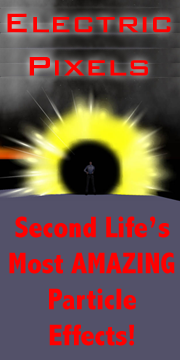A few weeks ago I described a theory I had regarding SL population that I called “The Two Year Effect.” The theory went something like this:
Without a defined requirement to stay, people tend to maintain interest in volunteer or hobby activities for a length of time between 18 to 30 months. About two years. If that’s so, then one reason for the apparent declining SL population is that the large bulk of folks who showed up in 2007 during the SL media hysteria are now expiring.
It was merely a theory, and I had no data to back it up.
Until now.
It turns out that reader Louis Platini took an interest in the theory and actually happened to have suitable data available for analysis. If you don’t know Louis, he’s the owner of Metaverse Business, makers of a wide variety of statistical counter devices for use by in-world businesses. His products range from free traffic counters to highly sophisticated systems capable of handling multiple regions and delivering far more than simple user counts. Do check them out!
The data collected by all these machines is safely stored by Metaverse Business so that their clients can make enquiries of their own statistics.
But Louis can also analyze this stored data, and he decided to do so after reading my article on the Two Year Effect. His results are very interesting, and you can read them in detail right here. The data should provide reasonably accurate results, as Metaverse Business has data on over 1.2M unique avatars. Louis employed data collected over all of 2008 and most of 2009 for the analysis.
The analysis attempted to determine the “lifetime” of avatars. In other words, the number of days between their first and last appearance. Some avatars “lived” only briefly, less than 100 days, whereas others have existed for many years. Louis then graphed the result, shown here:
The data shows an extremely steep departure rate right from the start. It appears that many people try SL for a few months and then depart (Give up? When is that easy-to-use viewer version 2.0 coming out anyway?)
Louis shows that the departures seem to follow an exponential rate for the first 400 days or so, then slow a relatively linear rate for the next 1000 days. After that departures slow right down to a trickle. Be sure to read his analysis where this is demonstrated with several explanatory graphics.
So where does this leave my Two Year Effect theory? It seems to be both wrong and right. Consider the exaggerated theoretical Two Year Effect on the chart above superimposed onto Louis’ actual data.
It’s wrong because it turns out that people are constantly leaving, not just after two years. The younger they are, the faster they tend to leave.
It’s right because almost everyone is gone after two years, and the large mass of 2007 signups must indeed be leaving (or already gone).
The fact that avatar lifetime is effectively only 2-3 years must be of grave concern to Linden Lab. A business that has temporary customers must have a strategy to get new ones to replace those departing, and that must be why Linden Lab is so focused on the experience of new residents.









 virtual business, building virtual products and exploring the virtual world.
virtual business, building virtual products and exploring the virtual world.